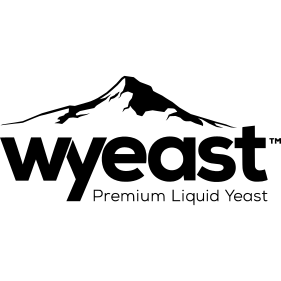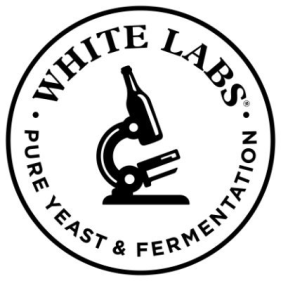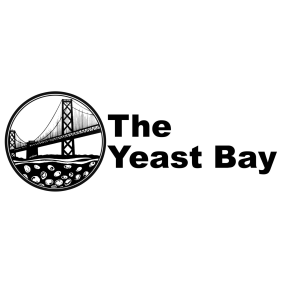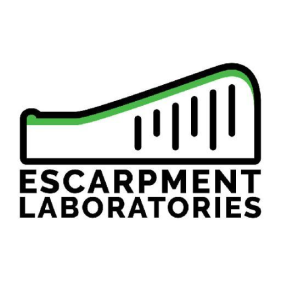- Make it on-site
- Workshops
- Kits
- Ingredients
- Equipment
- Sales
- Gifts
- About us
- FAQ
- Blog
- Cart
- My account
- Recipes
- Fr
Are you looking for a particular product?
The world in which we live today moves very fast. So fast that there is sometimes not enough time to do everything we want, including brewing a good beer! To solve this problem, some home brewers have tried to cut their brewing day in half by letting their mash go on all night and then finish brewing the next day. If the technique allows us to cut our brewing day in two, what about the final result? Do we get a beer similar to a conventional method?
Those who have tried it are unanimous, you get a more fermentable wort and more concentrated in sugar. For very dry beer styles like a saison or a pilsner, no problem, because they are already very dry beers. However, they will have a higher alcohol content. If you want to brew a beer like a stout, you will have to consider adding lactose or maltodextrin to increase the mouthfeel of your beer.
This technique is interesting to compensate for the loss of efficiency observed when brewing a very high alcohol beer. One of our customers tried the technique with our 5e Baron’s Black is Beautiful collaborative kit. He managed to get a final gravity similar to the original recipe, which is more difficult with a conventional technique.
It is important to avoid as much as possible the loss of temperature during the process. Too much temperature loss could lead to acidification of the wort by Lactobacillus bacteria. Furthermore, it has been observed that a beer made with an overnight mash gives a beer with a lower foam retention.
Will you be the next to try this technique?
References
IPA de la Nouvelle-Angleterre: Conseils de brassage et références
Many of you want to brew a New England IPA (and we understand you!) Some of you have probably realized that it’s not the easiest style of beer to brew! Here are few tips and references to help you brew a New England IPA (NEIPA) successfully.
When you think IPA, you immediately think of the bitterness that comes with it. You probably also know that the bitterness comes from the alpha acids in the hops. Well in a New England IPA, it is not the case! Technically, there is little or no alpha acid in a NEIPA! To obtain the bitterness of a conventional IPA, the alpha acids must be modified during boiling. In a NEIPA, hops are usually added after boiling. The temperature of the wort should be lowered between 70 and 80 degrees Celsius and a whirlpool should be created for 20 min. Below 80 degrees Celsius the alpha acids will not be modified, but other components that give bitterness to the beer will still be present in the beer giving us bitterness. Moreover this technique allows us to get some of the aromas of our favorite hops. The rest of the hops will be added in dry hop (the biggest you’ve ever seen!) and even more aromas will be added to the beer. If you look carefully at your NEIPA recipe, you may have noticed that the dry hop is not added a few days before packaging, but in the middle of active fermentation. Here we want to do more than just extract the aroma from the hops. We also want to biotransform the hops. We want the active yeast to modify the hops in order to produce new aromas.
Another important aspect of a NEIPA is the water profile used. Usually in IPAs, salts containing sulfur compounds are added to accentuate the bitterness of the hops. In a NEIPA you want to accentuate the roundness of the beer (like in a stout). Chlorine is added for this purpose. The Sulphur/Chlorine ratio should be around 1:3. Be careful with the total amount of minerals so you don’t get a bad surprise! The temperature of the mash will also have an impact on the roundness of the beer (more around 68 degrees Celsius).
The choice of yeast is also very important. A yeast with low flocculation (that stays in suspension) is generally recommended to accentuate the haze characteristic of the style. Good choices would be Wyeast London Ale III, Foggy London Ale from Escarpment lab, S-33 from Fermentis or Verdant IPA or American East Coast Ale Yeast from Lallemand.
Finally, oxygen is the worst enemy of hops! If you don’t have a system that allows you to transfer your beer without contact with oxygen, you risk ending up with a dark brown beer tasting like cardboard (and very little like hops).
We also offer NEIPA beer kits
- Boat House by A La Dérive
- HYPA II by Brasserie Du Bas Canada
If you want more information here are some interesting references:
J. Palmer, J., How to Brew Everything You Need to Know to Brew Great Beer Every Time, Fourth Edition, Brewers Publications, 2017.
https://www.lallemandbrewing.com/wp-content/uploads/2017/03/LAL-bestpractices-Biotransformation-digital-1.pdf (online consultation 2021/01/20).
https://byo.com/article/neipa-tips-from-the-pros/ (online consultation 2021/01/20).
https://byo.com/article/neipa-style-profile/ (online consultation 2021/01/20).
https://beerandbrewing.com/unlock-the-secrets-of-new-england-style-ipas/ (online consultation 2021/01/20).
https://www.youtube.com/watch?v=0IIytYAJowg (online consultation 2021/01/20).
https://www.youtube.com/watch?v=RE5X9SX-830 (online consultation 2021/01/20).
New England IPA: Brewing tips and References
Many of you want to brew a New England IPA (and we understand you!) Some of you have probably realized that it’s not the easiest style of beer to brew! Here are few tips and references to help you brew a New England IPA (NEIPA) successfully.
When you think IPA, you immediately think of the bitterness that comes with it. You probably also know that the bitterness comes from the alpha acids in the hops. Well in a New England IPA, it is not the case! Technically, there is little or no alpha acid in a NEIPA! To obtain the bitterness of a conventional IPA, the alpha acids must be modified during boiling. In a NEIPA, hops are usually added after boiling. The temperature of the wort should be lowered between 70 and 80 degrees Celsius and a whirlpool should be created for 20 min. Below 80 degrees Celsius the alpha acids will not be modified, but other components that give bitterness to the beer will still be present in the beer giving us bitterness. Moreover this technique allows us to get some of the aromas of our favorite hops. The rest of the hops will be added in dry hop (the biggest you’ve ever seen!) and even more aromas will be added to the beer. If you look carefully at your NEIPA recipe, you may have noticed that the dry hop is not added a few days before packaging, but in the middle of active fermentation. Here we want to do more than just extract the aroma from the hops. We also want to biotransform the hops. We want the active yeast to modify the hops in order to produce new aromas.
Another important aspect of a NEIPA is the water profile used. Usually in IPAs, salts containing sulfur compounds are added to accentuate the bitterness of the hops. In a NEIPA you want to accentuate the roundness of the beer (like in a stout). Chlorine is added for this purpose. The Sulphur/Chlorine ratio should be around 1:3. Be careful with the total amount of minerals so you don’t get a bad surprise! The temperature of the mash will also have an impact on the roundness of the beer (more around 68 degrees Celsius).
The choice of yeast is also very important. A yeast with low flocculation (that stays in suspension) is generally recommended to accentuate the haze characteristic of the style. Good choices would be Wyeast London Ale III, Foggy London Ale from Escarpment lab, S-33 from Fermentis or Verdant IPA or American East Coast Ale Yeast from Lallemand.
Finally, oxygen is the worst enemy of hops! If you don’t have a system that allows you to transfer your beer without contact with oxygen, you risk ending up with a dark brown beer tasting like cardboard (and very little like hops).
We also offer NEIPA beer kits
- Boat House by A La Dérive
- HYPA II by Brasserie Du Bas Canada
If you want more information here are some interesting references:
J. Palmer, J., How to Brew Everything You Need to Know to Brew Great Beer Every Time, Fourth Edition, Brewers Publications, 2017.
https://www.lallemandbrewing.com/wp-content/uploads/2017/03/LAL-bestpractices-Biotransformation-digital-1.pdf (online consultation 2021/01/20).
https://byo.com/article/neipa-tips-from-the-pros/ (online consultation 2021/01/20).
https://byo.com/article/neipa-style-profile/ (online consultation 2021/01/20).
https://beerandbrewing.com/unlock-the-secrets-of-new-england-style-ipas/ (online consultation 2021/01/20).
https://www.youtube.com/watch?v=0IIytYAJowg (online consultation 2021/01/20).
https://www.youtube.com/watch?v=RE5X9SX-830 (online consultation 2021/01/20).
What are melanoidins?
It is well known that alpha acids are what makes a beer bitter. But what makes a beer malty? One of the answer to this question is melanoidins. Melanoidins are compounds created during the Maillard reaction during the malting process. Melanoidins are a fusion between sugars and amino acids (protein subunit if you prefer). Melanoidins have a strong malty flavor. Other flavors such as honey, biscuit, caramel, toffee-like, bread-like, coffee-like and roasted-like are also associated with melanoidins. Some malt contain higher level of melanoidins (Honey malt, Melanoidins malt, Aromatic malt, Munich malt, Vienna malt, etc.)
You want to increase the malty character of your beer? If you use pale ale malt, you might want to replace 5 to 33% of the base malt with Munich malt or Vienna malt. The % depends of which one you want to use. You might need more Vienna malt (25-33%) than Munich malt (5-15%). You can do a beer with mostly Munich malt or Vienna malt if you want. It’s not enough malty for you? Try adding Aromatic malt or Melanoidins malt (5% of the grist to begin is a good starting point). The use of Melanoidin malt is also a good way to simulate a decoction mash without the trouble of doing one.
Why not try those tips for your next lager or English style beer?
Cheers!
References:
- Malt a practical guide from field to brewhouse.
- https://www.sciencedirect.com/topics/agricultural-and-biological-sciences/melanoidins (visited 2021/02/17).
- https://brulosophy.com/2016/10/24/grain-comparison-melanoidin-malt-vs-honey-malt-exbeeriment-results/ (visited 2021/02/17).
- https://beerandbrewing.com/dictionary/2ygB7hewgb/ (visited 2021/02/17).
- https://beerandwinejournal.com/malty-beers-malts/ (visited 2021/02/17).
Yes you read it right. It is possible to add oysters to a beer. But why? Let’s start from the beginning. We have to go back as far as the 1800’s. At that time, brewers had already figured out that oyster shells contain a significant amount of calcium carbonate (CaCO3). The impact of CaCO3 on the brewing process is already well documented and is particularly important in dark beer like stout where it can counteract the effect of specialty malt acidity. Oyster also help to clarify the beer. At the beginning of the 1900’s, England’ folks used to eat oyster with their well known dark colored beer. But it was only in 1929 that someone in New-Zealand had the idea to add oyster meat to beer.
The 2015 Beer Judge Contest Program has few details about Oyster stout, but give one example of oyster stout in the sweet stout category (16A). If you don’t like seafoods, do not worry. Oyster shell and meat will not bring oyster flavor to your beer. It gives your beer a sweet taste and a light oceanic flavor like taste. Shells also accentuate some bitter flavor found in beer. Add whole oysters to get a more complex flavor and only the shell for more subtle flavor. You can add them to the mash or during whirlpool (which have the advantage to cook it and prevent early spoilage). You can also add them during second fermentation for a more brighter flavor.
Why not trying it out for your next batch? But be sure not give it to someone with food allergies!
References:
- Oyster Stout (online consultation 2021/03/17)
- https://www.bjcp.org/docs/2015_Guidelines_Beer.pdf (2021/03/17)
- https://beerandbrewing.com/special-ingredient-brewing-with-oysters-oatmeal-oyster-stout-recipe/ (online consultation 2021/03/17)
- https://www.homebrewersassociation.org/how-to-brew/oyster-stout-tricks-brewing-mollusks/ (online consultation 2021/03/17)
When it comes to choosing a liquid yeast, there are some factors that can sway you from one yeast manufacturer to another. Do you want to do a straight pitch? Do you want to make a starter? Do you want to have to add yeast nutrients or not? Do you want a specific strain for a particular beer style?
Here are some overviews on 4 different yeast suppliers that we carry.



Ahh, the Smack-Pack Activator… If you want to get the yeasties going bananas without having to make a starter, look no further. There is a yeast nutrient pack in every package! All you have to do is isolate the pack into a corner, smack it (literally), and let the packaging slowly balloon during the brew day and pitch it straight when the time comes.




Smallest packaging available. This company has a fabulous selection of yeast varieties for all your brewing needs. You can get anything a basic California Ale yeast to Bretts and Wine/Cider yeasts. White Labs had the first pitchable liquid yeast, so they have been doing this for a long time. These yeasts are available from our online store as well as the retail store.



Largest selection of Brett and sour blends. They were also the first manufacture to carry the magical Kveik strain (Sigmund Voss Kveik)! Grain to glass in just a handful of days! That’s just plain crazy! This yeast gives some nice hints of orange peel to boot! Their quality is top notch.



Ontario’s first yeast manufacturer in Guelph. What do you get when you put a few homebrewing beer aficionados together in one business? You get the team at Escarpment Labs, of course. These yeasts have a 180+ billion count pitch rates. Not only do they have some of the best yeast Canada has to offer, they also took in some wild yeasts straight from the Ontario countryside. They also have a the Kveik Ring which gives you access to many different Kveik styles. Way cool, guys!
When it comes to choosing a liquid yeast, there are some factors that can sway you from one yeast manufacturer to another. Do you want to do a straight pitch? Do you want to make a starter? Do you want to have to add yeast nutrients or not? Do you want a specific strain for a particular beer style?
Here are some overviews on 4 different yeast suppliers that we carry.



Ahh, the Smack-Pack Activator… If you want to get the yeasties going bananas without having to make a starter, look no further. There is a yeast nutrient pack in every package! All you have to do is isolate the pack into a corner, smack it (literally), and let the packaging slowly balloon during the brew day and pitch it straight when the time comes.




Smallest packaging available. This company has a fabulous selection of yeast varieties for all your brewing needs. You can get anything a basic California Ale yeast to Bretts and Wine/Cider yeasts. White Labs had the first pitchable liquid yeast, so they have been doing this for a long time. These yeasts are available from our online store as well as the retail store.



Largest selection of Brett and sour blends. They were also the first manufacture to carry the magical Kveik strain (Sigmund Voss Kveik)! Grain to glass in just a handful of days! That’s just plain crazy! This yeast gives some nice hints of orange peel to boot! Their quality is top notch.



Ontario’s first yeast manufacturer in Guelph. What do you get when you put a few homebrewing beer aficionados together in one business? You get the team at Escarpment Labs, of course. These yeasts have a 180+ billion count pitch rates. Not only do they have some of the best yeast Canada has to offer, they also took in some wild yeasts straight from the Ontario countryside. They also have a the Kveik Ring which gives you access to many different Kveik styles. Way cool, guys!
NEIPAs are wreaking havoc in the brewing world. Beer lovers always want more. These beers are stuffed with hops during fermentation. The hops used are tropical hops. The Citra, Galaxy, Mosaïac, Sabro and many others are used in very large quantities in dry hop. This gives the beer a tropical flavour. There are even people who describe these beers as a tropical juice.



